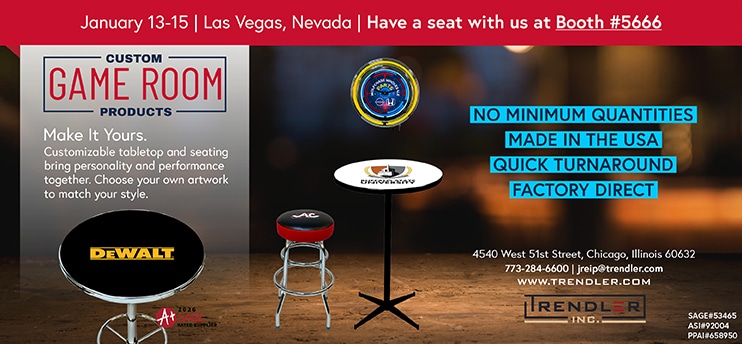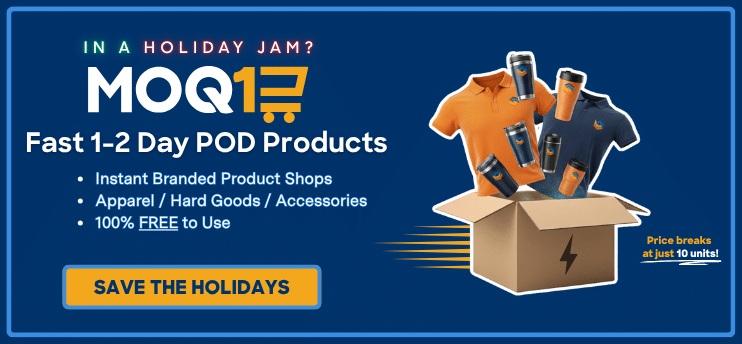As far as professional wrestling goes, there’s Before Hulk Hogan and After Hulk Hogan.
Before the red and yellow-clad herculean powerhouse with the blond hair and horseshoe mustache flexed his 24-inch pythons on TVs across the United States, branded merchandise wasn’t a fixture of pro wrestling. Fans would flock to ringside to beg their heroes for autographs and maybe purchase an 8×10 photograph near the concession stands, but they weren’t rocking T-shirts, baseball caps or any other promo product with their favorite’s image or catchphrase.
Hulkamania changed that.
After gaining national recognition as Thunderlips in Rocky III, Hogan jumped to World Wrestling Entertainment (then the World Wrestling Federation) at the precipice of its national expansion and pop culture takeover. His endless charisma, awe-inspiring physique, do-good attitude and in-ring superiority – cemented by being the world champion from 1984 until 1988 – captivated the public, propelling pro wrestling into the mainstream.
Vince McMahon, former owner of WWE, recognized Hogan’s universal appeal and made the larger-than-life character the face of his burgeoning brand. Capitalizing on the phenomenon, WWE embraced branded merch, quickly churning out apparel, hats, bandannas, action figures, lunchboxes, drinkware, ice cream bars, bedsheets, blankets, baby products, stuffed animals, towels, buttons, stickers, playing cards, you name it (all in addition to the explosion of VHS tapes, which Hogan often graced the cover of).
No hyperbole – Hogan was the most important figure in the history of pro wrestling, an integral part in WWE becoming so valuable that UFC parent firm Endeavor purchased the publicly traded company for around $9 billion in 2023.
An Unprecedented Deal
But Hogan isn’t synonymous with WWE. In fact, he left the company in 1993 to pursue Hollywood ambitions and ended up joining rival World Championship Wrestling a year later. In 1996, he did something even more shocking – became a bad guy.
After a decade of urging fans, particularly his little Hulksters packing arenas around the world, to train, say their prayers and eat their vitamins, Hogan reversed course and told them all to go to hell. Revealing himself as the mysterious third man in the villainous New World Order, he traded in the red and yellow for black and white, morphing into “Hollywood” Hogan, the most despised star in the sport.
The excitement surrounding his new persona, and that of the NWO, catapulted WCW ahead of WWE in ratings, revenue and the “cool” factor. Because of his influence on business, Hogan was able to secure a groundbreaking deal from WCW in 1998. The contract, which was filed as an exhibit in a racial discrimination lawsuit, guaranteed Hogan a multi-million-dollar base salary estimated at around $4-$5 million annually, plus bonuses tied to pay-per-view appearances, merchandise sales and more.
The contract also granted him unprecedented creative control, including the power to veto match outcomes and storylines; a percentage of the pay-per-view revenues for events he headlined; renewals or extensions on a short-term basis, giving him continued leverage in negotiations; and a “favored nations” clause – meaning if another wrestler was offered a better deal, Hogan’s pay would automatically adjust to match or exceed it.
- By comparison, top wrestlers at the time generally earned around $1 million per year and their fate – in storyline – was controlled by executives and decision-makers.
Under section nine, which covers merchandising and licensing activities, Hogan received a 50% royalty of the “net receipts” on all merchandise featuring his name, likeness or character. In the event his name, likeness or character was used in conjunction with other names, likenesses or characters, he received 50% of the pro rata portion of the “net receipts” received by WCW.
Hogan also received a 50% royalty of the “actual license fees” from licensing his name, likeness or character. In the event his name, likeness or character was used in conjunction with other names, likenesses or characters, he received 50% of the pro rata portion of the “actual license fees” received by WCW.
If that wasn’t enough, anytime he wore an NWO shirt, which was one of the hottest selling items in wrestling history, he received a promotional fee of $20,000 per month.
Oh, brother.
‘Fully-Fledged Enterprise’
Hogan, who passed away on July 24 at the age of 71, rarely turned down a licensing deal.
He put his name on multi-vitamins, a pasta restaurant, a video game, a workout set, even his own Saturday morning cartoon. After his days of dropping the leg were largely over, he parlayed his fame into a reality series, a beach shop, a bar, a wrestling league devoted to celebrities and most recently, a beer brand.
- For years, Hogan claimed that he was originally offered what became the George Foreman Grill, but the grill inventor’s family has disputed the assertion.
“Hogan’s death marks the passing of a figure who predated the business playbook now followed by athletes like Dwayne Johnson, Conor McGregor and even Lionel Messi,” wrote John E. Kaye of The European. “He demonstrated that an individual persona could transcend sport and function as a fully-fledged enterprise – an idea that reshaped both wrestling and the wider entertainment economy.”
Although Hogan continued to put his name behind products, his popularity waned over the past decade following racist remarks, which surfaced as part of a sex tape at the center of his lawsuit against Gawker Media and led to WWE temporarily severing ties with the hall of famer. This past January, during what turned out to be his final WWE appearance, Hogan was shaken after being heavily booed by the Los Angeles crowd.
- It was a drastically different reaction from his appearance at the Republican National Convention just six months prior, where the legendary wrestler endorsed President Donald Trump.
Despite leaving behind a complicated legacy, Hogan’s impact on pro wrestling, as well as sports and entertainment in general, can’t be denied. Pioneering a commercial model that many athletes have followed, his character created a brand identity that transcended his field. This merchandising success helped transform WWE into a global entertainment powerhouse and influenced broader sports marketing strategies.
More so than any other pro wrestler then or since, Hogan understood the power of branding.


